No Increase in Climate Disasters Despite Record CO₂
A quarter-century of data exposes the gap between climate rhetoric and real-world disaster trends.
In previous articles, I've delved into the discourse surrounding climate-related natural disasters and their purported increase due to rising greenhouse gas emissions. Today, I aim to update this analysis with the most recent data from 2024, a year that mainstream media (MSM) has widely proclaimed as the hottest on record. For instance, The Guardian reported that two-thirds of the Earth's surface experienced record-breaking heat in 2024, attributing this to human-induced climate change.
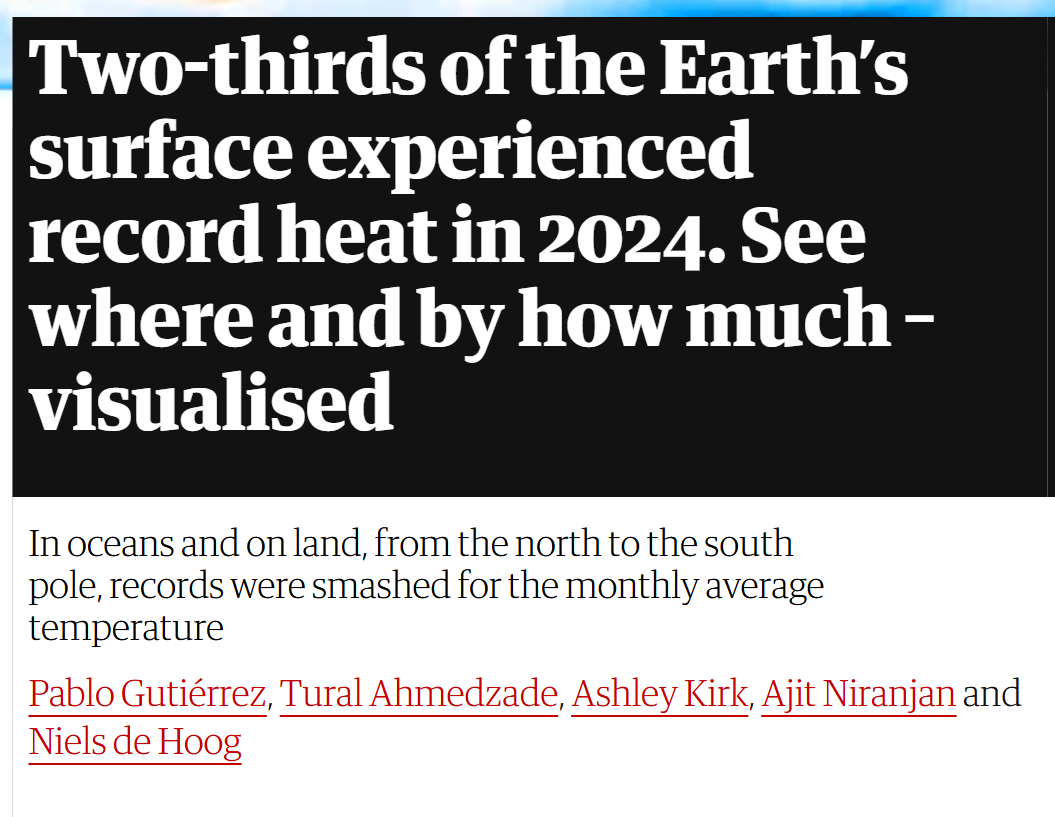
Despite these alarming headlines, an examination of the Emergency Events Database (EM-DAT) reveals a different narrative. The data indicates that, since 2000, there has been no significant increase in climate-related natural disasters such as extreme weather events, wildfires, droughts, and floods. This finding challenges the prevalent assertion that higher CO₂ emissions and rising global temperatures directly correlate with an uptick in such disasters.
Analyzing the EM-DAT Data:
EM-DAT, maintained by the Centre for Research on the Epidemiology of Disasters (CRED), offers a comprehensive global record of natural and technological disasters. Focusing on climate-related events, specifically floods, droughts, extreme temperatures, storms, and wildfires, I observed that from 2000 to 2022, the frequency of these events remained relatively stable. Contrary to popular belief, certain years in the early 2000s even recorded higher counts than more recent years.
This finding is particularly intriguing given that the 21st century has seen unprecedented CO₂ emissions and supposedly some of the hottest years on record. If the widely accepted narrative held true, we would expect a corresponding increase in climate-related natural disasters. The absence of such a trend in the EM-DAT data suggests that the relationship between GHG emissions, rising global temperatures, and the frequency of these disasters is more complex than often portrayed.
Understanding Pre-2000 Data and Reporting Biases:
It's essential to address the quality and reliability of disaster data, especially from periods before 2000. EM-DAT acknowledges that pre-2000 records are subject to significant reporting biases. The apparent increase in reported disasters starting from the 1960s coincides with the establishment of organizations like the Office of U.S. Foreign Disaster Assistance (OFDA) in 1964 and the creation of CRED in 1973.
These institutions improved disaster reporting and data collection methodologies. Additionally, advancements in communication technologies, such as the advent of personal computers and the internet, have enhanced our ability to document and report events. Consequently, many smaller or less-publicized disasters prior to 2000 were likely underreported or omitted, leading EM-DAT to recommend caution when interpreting pre-2000 data. In fact, since September 2023, EM-DAT has classified all pre-2000 data as 'Historic' to denote its lesser reliability.
Note: The difference observed in my plot is a result of the removal of non-climate-related phenomena such as earthquakes.
Defining a Disaster According to EM-DAT:
To contextualize the data, it's crucial to understand how EM-DAT defines a disaster. According to their criteria, a disaster is an unforeseen and often sudden event that causes significant damage, destruction, and human suffering, overwhelming local capacity and necessitating external assistance at the national or international level. This definition encompasses a wide range of events but sets specific thresholds for inclusion in the database. For an event to be recorded in EM-DAT, it must meet at least one of the following criteria:
Ten or more people reported killed
One hundred or more people reported affected
Declaration of a state of emergency
Call for international assistance
These thresholds ensure that only significant events are cataloged, but they may also exclude smaller-scale disasters, especially in regions with limited reporting capabilities.
Focusing on Climate-Related Events:
In my analysis, I concentrated solely on climate-related natural disasters, deliberately excluding technological events, epidemics, and geophysical occurrences like earthquakes. This focus aligns with the prevalent narrative that links GHG emissions and global warming specifically to an increase in climate-related events. By isolating these categories, the analysis directly addresses the claims that such disasters have escalated in frequency due to human-induced climate change.
Challenging the Mainstream Narrative:
Despite the EM-DAT data, mainstream media and authoritative bodies continue to assert that extreme weather events are increasing due to climate change. For instance, a recent article in The Guardian emphasized that we are living in an era of extreme weather, citing rampant wildfires, floods, and other natural disasters displacing countless individuals.
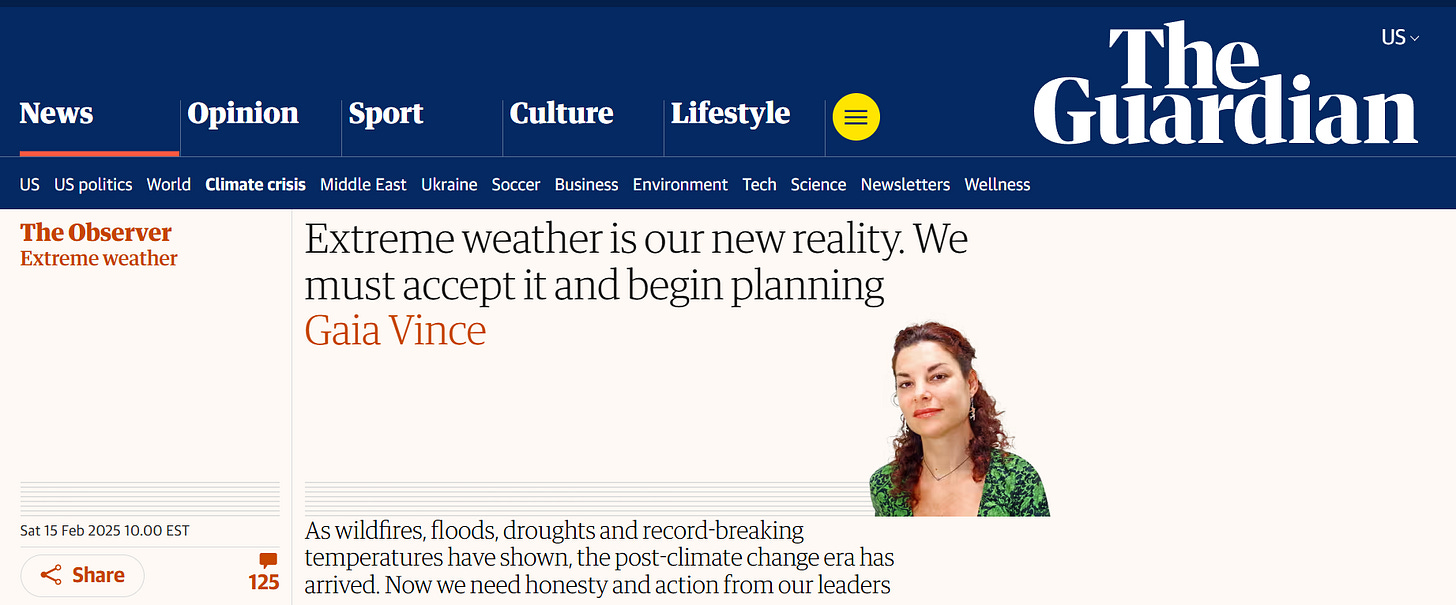
Similarly, the Intergovernmental Panel on Climate Change (IPCC) has stated…
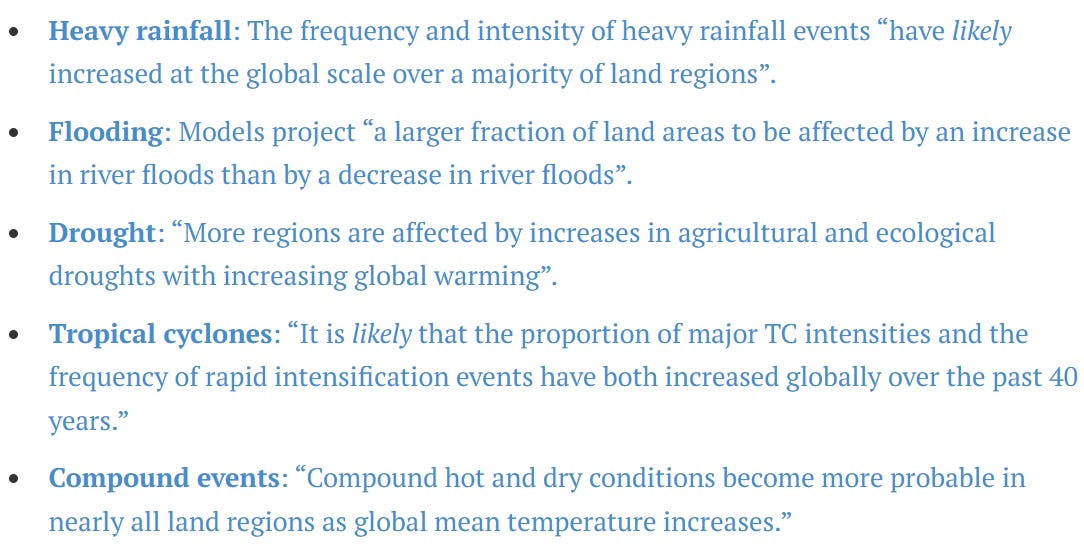
These assertions contribute to a pervasive belief that climate-related disasters are on the rise, a narrative that is not substantiated by the EM-DAT data.
The Symbiotic Relationship Perpetuating the Narrative:
The persistence of this narrative can be attributed to a symbiotic relationship among funding agencies, governmental institutions, climate scientists, and the MSM. Research funding is often directed toward studies that emphasize the adverse impacts of climate change, incentivizing scientists to focus on alarming scenarios. Governmental bodies, in turn, utilize these studies to justify policy decisions and regulatory measures. The media amplifies these messages, as sensational stories about extreme weather and impending disasters attract readership and viewership.
This cycle reinforces the perception of a direct and escalating link between GHG emissions and climate-related natural disasters, despite empirical data suggesting otherwise.
Conclusion:
It's imperative to critically assess the prevailing narratives surrounding climate change and natural disasters. The EM-DAT records indicate that, contrary to widespread claims, there has not been an increase in climate-related natural disasters over the past 25 years.
In light of these findings, it's essential to question the motivations behind the perpetuation of this narrative and to seek a more nuanced understanding of the relationship between human activities and natural disasters.




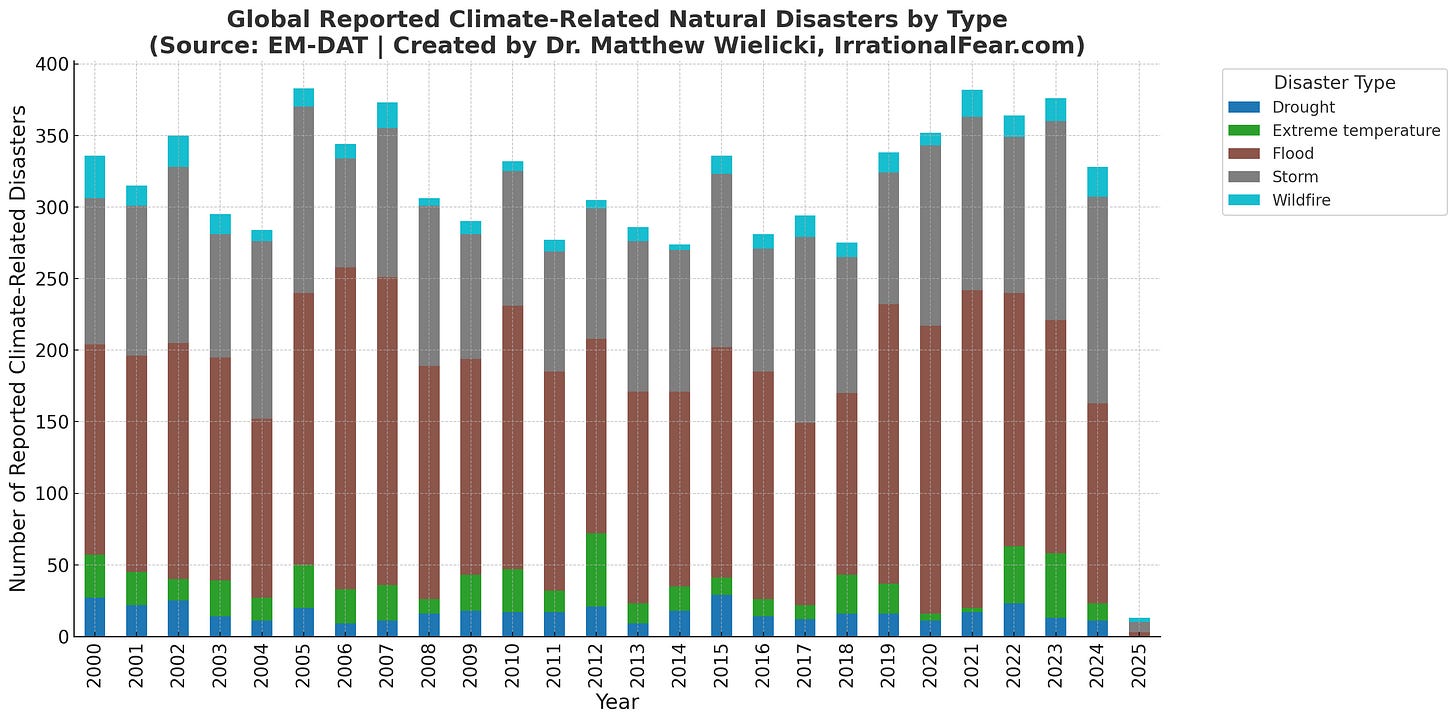
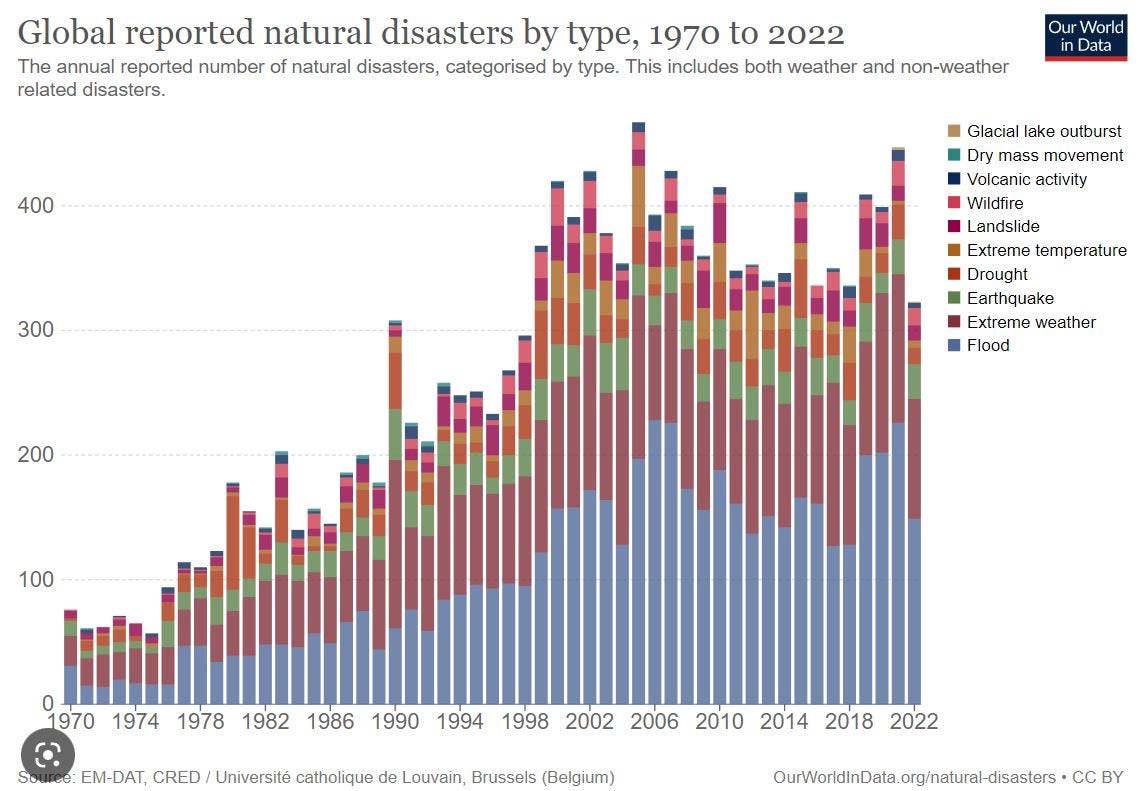

Is there any reasonable mechanism to ensure the data being gathered/encoded currently is good quality and comprehensive enough to either prove or debunk the climate change cultism?
Would it be worthwhile to generate climate models with different assumptions based less on ideology and more on scientific principles? Producing a series of accurate predictions to contrast to the consistent inaccurate models of the cultists?
!